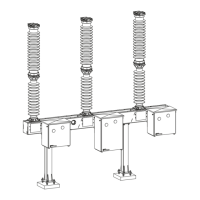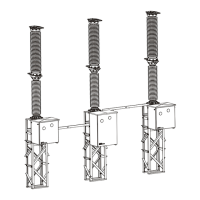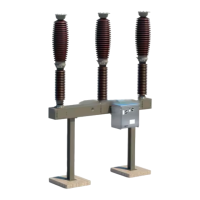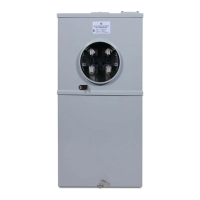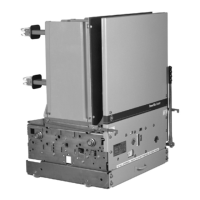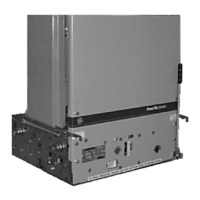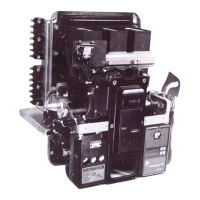HANDLING SULFUR HEXAFLUORIDE
REV6 /REV3 OI 248 (EN) 13
3 Handling Sulfur Hexafluoride
Sulfur hexafluoride (SF
6
) is an inert gas that is colorless and odor-
less, chemically neutral, non-combustible and approximately five
times heavier than air. It is non-toxic and is not an ozone-depleting
substance.
Pure SF
6
is completely safe for human beings and animals physio-
logically. Because of its weight, however, it can displace the air in
poorly ventilated, lower-lying or underground spaces (e.g. ba-
sements, cable ducts and maintenance shafts).
SF
6
is not classified as a hazardous substance in European
chemicals legislation.
It has no ecotoxic potential and does not contribute to destruction of
the ozone layer. Because of its high global warming potential
(22,200), it can contribute to the greenhouse effect if it is released
into the atmosphere. Therefore do not dump or otherwise discharge
SF
6
to the atmosphere, and reduce incidental emissions wherever
possible.
If SF
6
is used to fill electrical switchgear, it must comply with
standard IEC 60376.
Standards governing SF
6
handling
- IEC 60480 Guidelines for the checking and treatment of sulfur
hexafluoride taken from electrical equipment and specification for
its re-use.
- IEC 62271-4 Use and handling of sulphur hexafluoride (SF
6
) in
high-voltage switchgear and controlgear.
3.1 Safety Precautions When Handling SF
6
3.1.1 Oxygen Displacement
SF
6
is five times heavier than air and can accumulate in under-
ground rooms or poorly ventilated spaces if it gets into the work en-
vironment in large quantities. In such cases air is displaced, which
consequently reduces the amount of oxygen available. If the oxy-
gen concentration drops below 16% (IEC 62271-4), there is the
danger that personnel working in the surrounding area will suffoca-
te. Poorly ventilated or non-ventilated underground spaces such as
basements, cable ducts, maintenance shafts and drainage systems
are especially vulnerable.
3.1.2 Mechanical Handling
The SF
6
operating pressure in the switchgear unit is higher than the
atmospheric air pressure. To avoid the danger of injury resulting
from mechanical breakage of housing components, personnel must
comply with the safety precautions specified in the appropriate
chapters of this operating manual.

